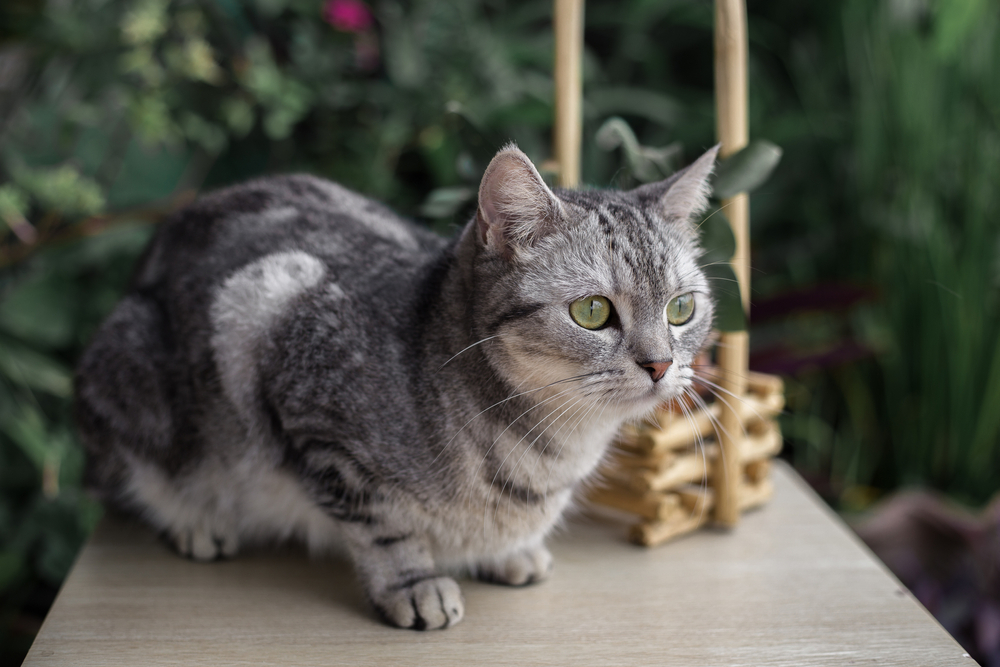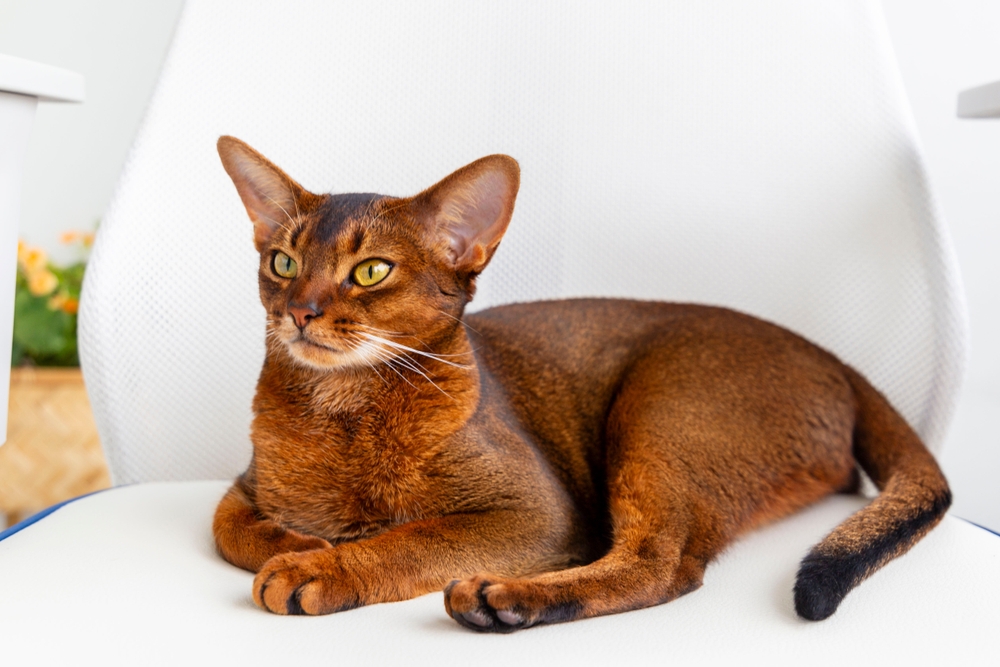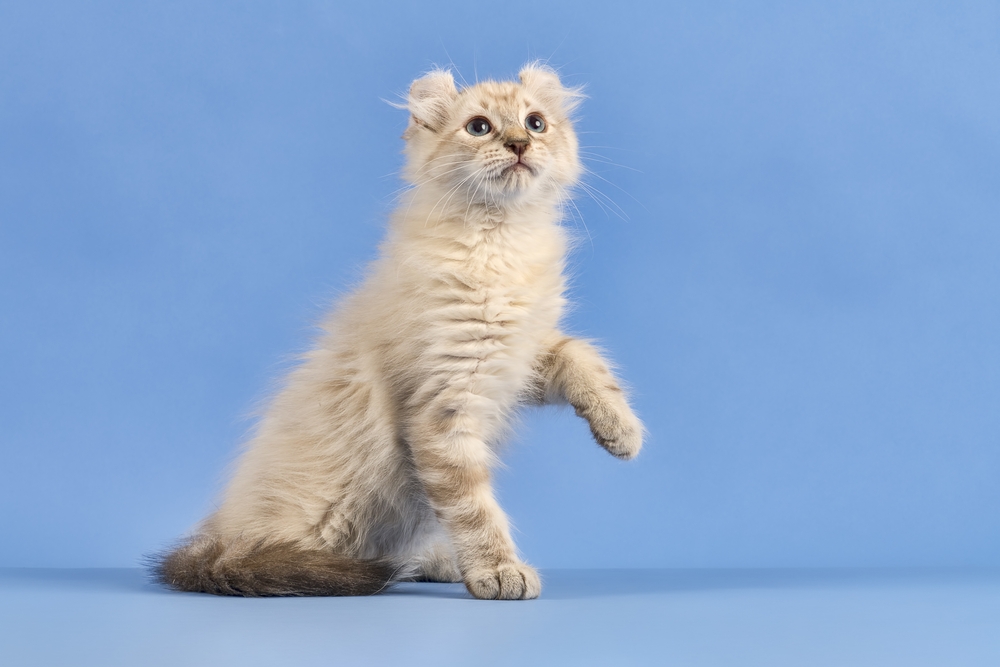The closest related breeds are the British Shorthair and the European Shorthair, which share similar ancestry. Compared to these, the American Shorthair is generally more athletic and slightly less cobby in build.
About
The American Shorthair is one of the oldest and most beloved cat breeds in the United States, admired for its robust build, adaptability, and gentle temperament. With a medium-to-large body, broad chest, and strong legs, it embodies a classic, sturdy look. Its short, dense coat comes in more than 80 recognized colors and patterns, though the silver tabby remains the most iconic. The face is round with full cheeks, large eyes, and medium ears, giving the American Shorthair a balanced and approachable expression.
The American Shorthair (Felis catus), of the family Felidae, traces its history back to cats brought by European settlers to North America in the 1600s. These working cats were prized for their ability to protect food stores from rodents on ships and farms. Over time, selective breeding refined them into today’s affectionate yet independent breed, formally recognized in the early 20th century.
Typically weighing 8–15 pounds (3.6–6.8 kg), males are larger and more muscular than females. American Shorthairs are known for their longevity and hearty health, often living 15 years or longer with proper care. Their coats require minimal grooming, as the dense fur resists matting, though regular brushing helps reduce shedding.
Temperamentally, American Shorthairs are calm, affectionate, and easygoing. They are neither overly clingy nor aloof, striking a balance that makes them excellent family pets. These cats generally get along well with children, dogs, and other cats. Playful but not hyperactive, they are equally content chasing toys or lounging in a sunny spot.
With their classic appearance, rich history, and adaptable personality, the American Shorthair remains one of the most enduring and popular cat breeds in the United States and beyond.
Physical Characteristics
Coat: The American Shorthair has a short, dense, and resilient coat that lies close to the body. It is slightly hard to the touch, offering protection from weather and minor injuries. The breed comes in more than 80 recognized colors and patterns, including silver tabby, solid, calico, tortoiseshell, and bicolor.
Face: They have a large, full-cheeked face with a broad, rounded head. The eyes are wide-set, medium to large, and round—commonly gold or copper in color, though coat color can influence eye color (e.g., silver tabbies often have green eyes).
Body: American Shorthairs are medium-to-large cats with a muscular, solid, and well-balanced build. Their broad chest, strong shoulders, and sturdy legs give them a powerful yet agile appearance, reflecting their heritage as working cats.
Ears: Medium in size, rounded at the tips, and set well apart on the head.
Tail: Medium length, thick at the base, tapering slightly toward a rounded tip, proportionate to the body.
Size:
-
Length: About 12–15 in (30–38 cm) from head to base of tail.
-
Height: Around 9–10 in (23–25 cm) at the shoulder.
Weight:
-
Adult Female: 8–12 lbs (3.6–5.4 kg).
-
Adult Male: 11–15 lbs (5–6.8 kg), though some can be larger.
The American Shorthair’s combination of a strong, muscular body, protective coat, and calm yet alert expression highlights its origins as a skilled hunter and hardy companion. It balances strength with an approachable, classic domestic cat look.
Reproduction
Mating and Courtship:
American Shorthairs reach sexual maturity between 6–9 months of age, though responsible breeders often wait until at least 12 months before breeding. Females in heat display increased vocalization, restlessness, rolling behavior, and affectionate rubbing. Males respond with vocal calls and pursuit.
Breeding Season:
They are capable of breeding year-round, but heat cycles are more frequent in spring and summer when daylight hours are longer.
Gestation:
Pregnancy lasts about 63–65 days (roughly 9 weeks).
Birth of Kittens:
Typical litter size is 3–6 kittens, though litters can range from 1–8. The mother usually chooses a safe, enclosed nesting area for delivery.
Care and Nurturing:
Kittens are born blind and weigh about 3–4 oz (85–113 g). The queen provides warmth, frequent nursing, and grooming. American Shorthairs are generally attentive and calm mothers.
Weaning and Social Development:
-
Eyes open at 7–10 days.
-
Kittens begin walking by 3 weeks.
-
Solid food is introduced around 4–5 weeks, with full weaning usually complete by 8–10 weeks.
Independence:
By 12–14 weeks, kittens are ready for adoption, as they have developed social skills, litter habits, and early hunting/play instincts. Breeders often keep kittens until at least 12 weeks to ensure strong development and stability.
The American Shorthair’s reproductive cycle follows typical domestic cat patterns, with strong maternal instincts and a calm temperament making queens reliable and protective mothers.
Lifespan
Lifespan in the Home:
American Shorthairs are known for their robust health and can live 15–20 years with proper care. Many reach their late teens in good health.
Lifespan in Outdoor or High-Risk Settings:
Outdoor cats face dangers such as traffic, predators, disease, and harsh weather, often reducing their average lifespan to 7–10 years.
Factors Affecting Longevity:
-
Genetics: Generally a hardy breed with few hereditary issues, though they may be prone to obesity if overfed.
-
Diet & Weight Management: A high-quality, protein-rich diet and portion control are essential, since American Shorthairs are stocky and can gain weight easily.
-
Preventive Care: Regular veterinary checkups, vaccinations, and dental care help prevent common feline illnesses.
-
Environment: Indoor living with opportunities for play, climbing, and exercise supports long-term physical and mental health.
Notable Longevity:
With attentive care, some American Shorthairs have been known to live beyond 20 years, especially in calm, stable home environments.
The American Shorthair’s combination of strong genetics, balanced temperament, and adaptability makes it one of the longest-lived and most resilient pedigreed cat breeds
Eating Habits
Diet:
American Shorthairs are obligate carnivores and thrive on a protein-rich diet based on high-quality animal sources. Balanced commercial cat foods (wet, dry, or a mix) are suitable, provided they meet AAFCO nutritional standards. Wet food supports hydration, while dry kibble helps with dental maintenance.
Feeding Frequency:
-
Kittens (up to 6 months): 3–4 meals per day to support growth and energy needs.
-
Adults (6 months–10 years): 2 meals daily, with portions adjusted to prevent overeating.
-
Seniors (10+ years): Smaller, more frequent meals or specialized senior formulas to support kidney, joint, and heart health.
Special Considerations:
-
American Shorthairs are prone to obesity because of their stocky, muscular build combined with a calm temperament. Careful portion control and regular play are important.
-
They may enjoy variety, but any dietary changes should be gradual to avoid digestive upset.
-
Fresh, clean water should always be available to support kidney and urinary health.
Treats:
Occasional treats such as freeze-dried meat or small amounts of cooked chicken or fish are acceptable, but treats should make up no more than 10% of daily calories.
Feeding Enrichment:
Puzzle feeders, food-dispensing toys, and elevated feeding stations can help stimulate their natural hunting instincts and prevent overeating.
The American Shorthair’s eating habits reflect its calm yet sturdy nature—nutrient-dense meals, portion control, and engaging feeding methods keep them lean, healthy, and active throughout life.
Uniqueness
Classic Working Cat Heritage:
Originally brought to North America by European settlers to control rodents, the American Shorthair has a long history as a skilled mouser and farm companion.
Balanced Build:
Known for its muscular, medium-to-large body, the American Shorthair is strong and durable without being overly heavy, reflecting its working cat origins.
Variety of Colors and Patterns:
With over 80 recognized coat colors and patterns, including the famous silver tabby, the breed displays one of the widest ranges of appearances among pedigreed cats.
Low Maintenance:
Their short, dense coat requires minimal grooming compared to longhaired breeds, making them easy-care companions.
Gentle Temperament:
American Shorthairs are calm, easygoing, and affectionate without being overly demanding. They adapt well to families, children, and other pets, making them one of the most versatile breeds.
Long Lifespan & Robust Health:
With few hereditary health issues and a sturdy constitution, American Shorthairs are among the longest-lived pedigreed cats, often reaching 15–20 years.
Cultural Significance:
The breed is considered a true American cat, symbolizing the adaptation of early European cats into strong, reliable companions suited to North American life.
The American Shorthair’s combination of history, strength, variety in appearance, and easygoing personality makes it one of the most enduring and beloved cat breeds in the world.
Be the First to Share Photos of This Species.
FAQ’s
1. What is the closest species or breed to the American Shorthair?
2. How does the American Shorthair compare to other cats?
American Shorthairs are sturdier and more muscular than many domestic breeds, with a reputation for being low-maintenance, gentle, and long-lived. Unlike high-energy breeds such as the Abyssinian, they are calmer and more content with lounging, though they still enjoy interactive play. Their wide variety of coat colors and patterns also makes them stand out visually.
3. What national parks or regions provide the best chance to see a cat resembling the American Shorthair?
The American Shorthair resembles classic domestic working cats that historically thrived in rural and wilderness areas. Cats of similar build can be found as feral or semi-feral populations near:
-
Cuyahoga Valley National Park, Ohio – Close to agricultural lands where working cats have historically lived.
-
Great Smoky Mountains National Park, Tennessee/North Carolina – Rural communities nearby often have cats resembling American Shorthairs.
-
Colonial historic sites near national parks in New England – Where descendants of early European settlers’ cats, much like the American Shorthair, can still be found.
Would you like me to also include African wildcat connections (the ancestor of all domestic cats) for context in these “closest species” sections, like I did with the Abyssinian?





































































